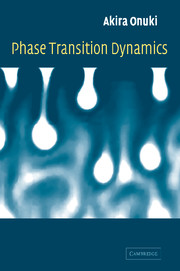2 - Critical phenomena and scaling
Published online by Cambridge University Press: 13 August 2009
Summary
General aspects of static critical behavior [1]–[5] will be summarized using fractal concepts in Section 2.1. The mapping relations between the critical behavior of one- and two-component fluids and that of Ising systems will be discussed in Sections 2.2 and 2.3. They are useful in understanding a variety of thermodynamic experiments in fluids and will be the basis of the dynamical theories developed in Chapter 6. As another kind of critical behavior of xy symmetry, He near the superfluid transition will be treated in our scheme in Section 2.4. Gravity effects on the critical behavior in one-component fluids and He will also be discussed.
General aspects
First we provide the reader with snapshots of critical fluctuations whose characteristic features are strikingly similar in both Ising spin systems and fluids. Figure 2.1 shows a 128 × 128 spin configuration generated by a Monte Carlo simulation of a 2D Ising spin system in a disordered phase very close to the critical point. Figure 2.2 displays particle positions realized in a molecular dynamics simulation of a 2D one-component fluid in a one-phase state close to the gas–liquid critical point. In the latter simulation, the pair potential u(r) is of the Lenard-Jones form (1.2.1) cut off at r/σ = 2.5 and characterized by ∈ and σ. The temperature and average number density are T = 0.48 ∈ and n = 0.325σ–-2, respectively.
- Type
- Chapter
- Information
- Phase Transition Dynamics , pp. 34 - 77Publisher: Cambridge University PressPrint publication year: 2002



